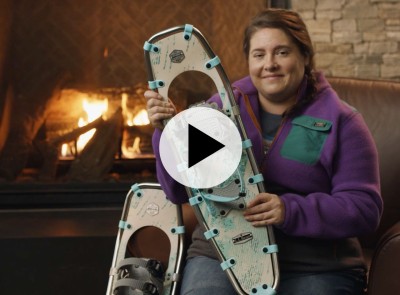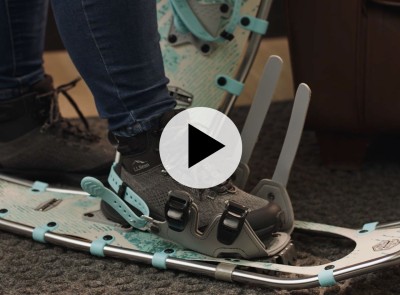7 Tips for Winter Safety
How to properly warm up to a winter outside
4 Min. Read | Winter
We know going outside in cold weather can sometimes make people feel uneasy, but it doesn’t have to be that way. In our 100+ years in Maine we’ve experienced some of the harshest winters, so we know pretty much everything there is to know about cold weather – including just how fun and amazing it can be when you get out there comfortably and safely. These tips and advice from the cold-weather experts will show you how.
1. Expect the Best, Plan for the Worst
The number one mistake people make when going outside during winter is not preparing enough – or at all. There’s nothing admirable about throwing caution to the wind, especially when the wind is below zero. So, before you plan any winter outdoor activities, make sure you're bringing everything needed to stay warm and keep safe. This includes things like:
• Warm, waterproof layers
• Weatherproof/Waterproof jacket or coat
• Mittens/gloves
• Winter hat
• Wool or synthetic socks
• Winter/Hiking Boots (Weather-ready footwear with good traction)
• Hydration
• Snacks

Expert Advice
The old saying “know before you go” really does go a long way with winter outings. In general, know your skill needed for the activity, know the skill of people going with you, research the area trails, pack appropriately to match the activity (non-cotton clothing layers, food/water, safety gear and footwear) and inform someone where you are going and when you will return. - Julie, Outdoor Discovery Programs Instructor
2. Layers, layers, layers
Having warm, waterproof layers on hand will keep you snug, safe, and warm so you can enjoy your time outside more – and for longer. Depending on how active you’re planning on being, you might need to add layers or remove them, so we recommend bringing multiple layers so you can customize your comfort on the go.
Need help deciding the best layers to bring? Check out our Base Layer Buying Guide
3. Know Your Limits
Being safe also means understanding your limits and respecting them – whether that’s choosing an appropriate skill level, factoring in health and medical conditions, or adhering to any other special considerations. Remember, you don’t have to prove anything when you’re outdoors. Simply being there is what’s important. So, try not to bite off more than you can chew and pace yourself. And if you really aren’t sure about something, don’t risk it, just ask. We’re always here to help.
4. Accessories Are Essential
If it’s getting frosty out there, a winter hat and gloves are more than a nice to have, they’re a need to have. Not only will bare skin, ears, and fingers exposed to prolonged cold make for an uncomfortable outing, frostbite isn’t just something you see in the movies – it’s very real and it can happen very fast. So before going out into any cold situation make sure you have a warm hat to protect your head, toasty gloves/mittens to protect your hands, and maybe add a scarf in there or some long underwear to increase your coziness significantly. Having the right essentials will help ensure wherever the winter fun takes you, you’ll always be at your best.
5. Know How to Recognize Frostbite/Hypothermia
If you follow all the tips covered in this story, neither of these conditions should be an issue, but that doesn’t mean you shouldn’t know what to look for – not just for your safety, but for family, friends, and anyone else you meet outside.
Frostbite: Extremities like the nose, ears, fingers, toes, and chin are the parts most often most prone to frostbite, so protect them sufficiently and you shouldn’t have any troubles. However, if you are worried you or someone you know may be experiencing frostbite, here are some things to look for:
• Area is cold and possibly hard to the touch
• Redness or paleness
• Numbness
• Pain
If you or anyone else is experiencing frostbite, get help and to warmth immediately. In the meantime, skin on skin contact is the best way to slowly rewarm skin until you can see a medical professional. Avoid warm water or massaging the area, as this could do more harm than good.
Hypothermia: When this serious condition occurs, body temps get too low and can start affecting you both physically and mentally. It’s not only uncomfortable it can be extremely dangerous if ignored. One of the easiest ways to prevent hypothermia is to wear/bring enough warm, waterproof layers to keep you cozy and warm. If you do suspect hypothermia, here are some telltale signs:
• Shivering
• Fatigue/Drowsiness
• Confusion/Disorientation
• Loss of coordination
If you see any of these signs and think it may be hypothermia, get yourself or the affected person to a doctor right away.

Expert Advice
Bring glove liners so you can take your hand out of your mittens without exposing them directly to the elements – Leah, Outdoor Discovery Programs Instructor
6. Find the Right Footwear
When it comes to spending time outside in winter, nothing stops the fun like cold, wet feet. So, before you take that first step outside, it’s imperative to outfit yourself with the right winter footwear. Choosing the right pair may depend on location, weather, and terrain, but generally your boots should keep feet warm, protect them from weather and other factors, and provide a strong confident grip if you’ll be walking on ice or snow.
Check out our Winter Boot Buying Guide to find the winter boots that fit your needs – in styles and sizes for the whole family.
To add more traction to your boots, products like Kahtoola MICROspikes Footwear Traction are an easy way to establish a stronger grip on slippery surfaces. Plus, they’re easy to put on, easy to pack, and fit everything from your basic bean boot to your snow boot.

Expert Advice
Match the level of insulation to the activity. If you’re doing something stationary like ice fishing, I recommend a heavily insulated boot. For more active outings like snowshoeing, a lighter insulation keeps you warm and prevents possible sweating. – Brent, L.L.Bean Product Developer
7. Try Our Outdoor Discovery Programs
Sometimes one of the smartest ways to enjoy a winter outdoors is to simply not go alone. It’s always more fun (and safer) out there with friends, so the more the merrier. If you really want to experience a winter wonderland without a worry or a care in the world, check out our Outdoor Discovery Program's courses, trips, and tours. An outdoor expert will be there to guide you all the way, showing you the ins and outs of being outside, while keeping you and your company warm and safe. Plus, it’s a great way to try an outdoor activity you may have always wanted to but weren’t sure you could.
Learn more about Outdoor Discovery Programs
By following these tips and outfitting yourself with the best L.L.Bean outerwear and winter accessories, this winter will be one for the ages. If you have any cold weather tips or tricks we didn’t include, feel free to share them with us and other customers at #BeanOutsider.
Related Stories















